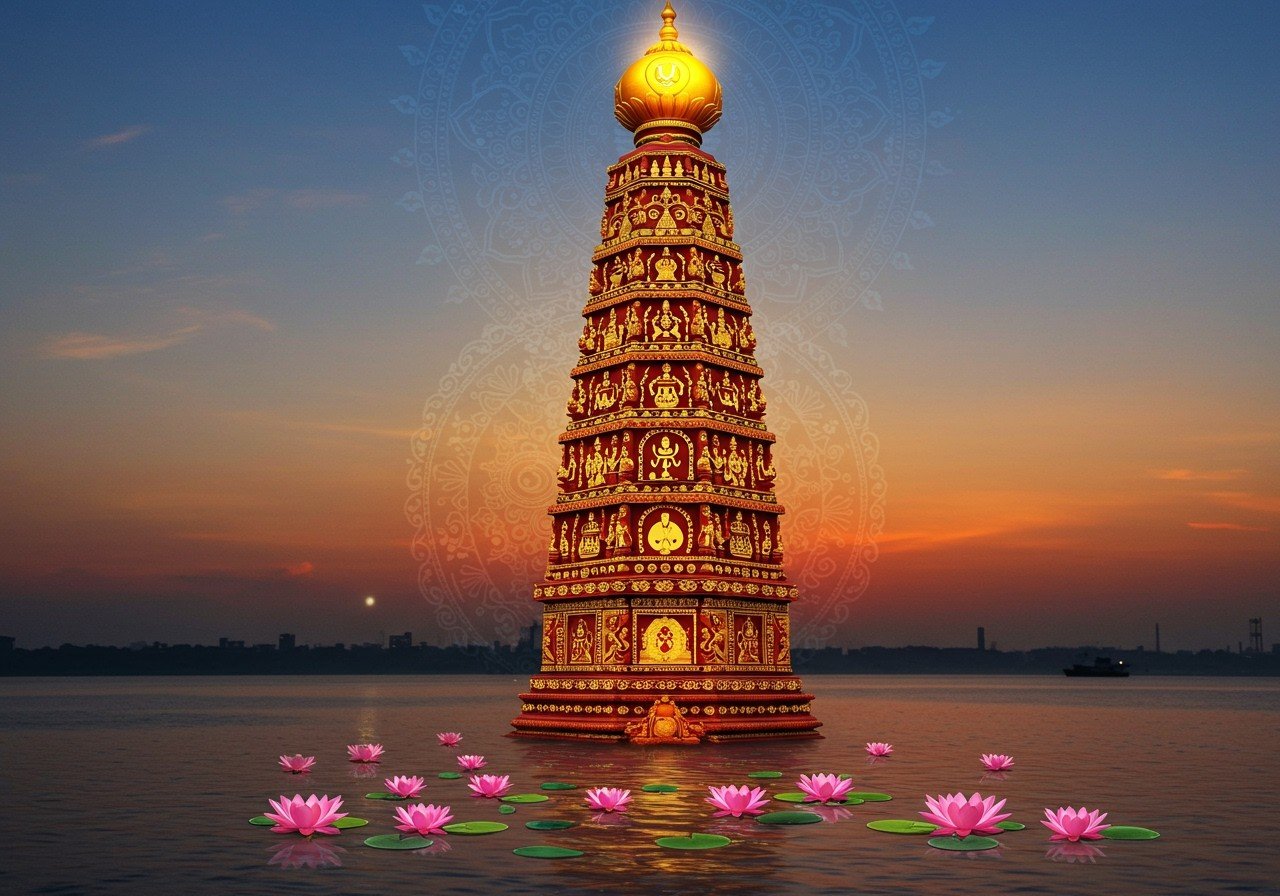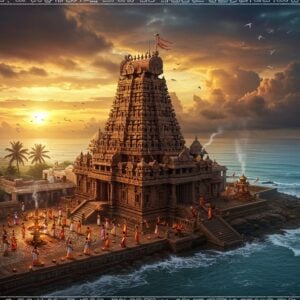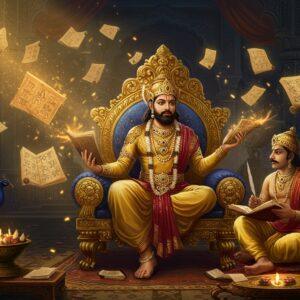
The Dwajasthambam, also known as Kodimaram, stands tall and proud, a beacon of tradition and spirituality in Hindu temples, especially across South India and Sri Lanka. Positioned between the majestic Gopuram (gateway tower) and the sacred Maha Mandapa (main hall), it serves as a powerful link between the earthly and the divine. This sacred flagstaff embodies hope, enlightenment, and a deep connection to the divine.
Meaning and Significance
- A Bridge Between Worlds: The Dwajasthambam, literally meaning “flag pole” (‘Dwaja’ – flag, ‘Sthambam’ – pole), isn’t just a physical structure. It’s a spiritual connector, a conduit between heaven and earth, linking devotees with the Supreme Being. It acts as a channel of divine energy, bringing blessings down to the earthly realm.
- Raising Our Spirits: The very word ‘dhvaja’ signifies elevation – a lifting to a higher level of understanding and activity. The Dwajasthambam embodies this aspiration, symbolizing hope and the burning desire to overcome ignorance, guiding us towards spiritual growth and enlightenment.
- A Celebration of Faith: In temples that host festivals (Utsavas), the Dwajasthambam plays a central role. The flag hoisting ceremony (Dwajarohanam) marks the joyous commencement of the festival, inviting the celestial deities to participate in the festivities. The lowering of the flag signifies the peaceful conclusion of the celebrations. This sacred ritual adds a vibrant layer of tradition and reverence to temple festivals.
- The Spine of Divinity: The Dwajasthambam’s form is often compared to the human spine, with its rings mirroring the 32 bones in the spinal cord. This analogy underscores its importance as a central pillar of strength and support, both physically and spiritually.
- A Vessel of Divine Power: It’s believed that the Dwajasthambam carries the potent energy of the presiding deity of the temple. This makes it a focal point for devotees seeking blessings and connection with the divine.
- Symbol of the Trimurti: The top of the Dwajasthambam frequently features three horizontal perches, symbolizing righteousness, reputation, and propriety. These perches can also represent the Trimurtis – Brahma, Vishnu, and Shiva – the three principal deities of Hinduism.
- A Journey of Self-Discovery: The Dwaja represents our individual identity and ego. The stambha, or pillar, encourages us to transcend our ego and seek the divine. This journey from the self towards the Supreme is a profound aspect of Hindu spirituality.
Dispelling Common Misunderstandings
Let’s address some common misconceptions surrounding the Dwajasthambam:
- Not all temples have one: Contrary to popular belief, not every temple requires a Dwajasthambam. Its presence is more common in larger temples or those that regularly conduct festivals. It’s not mandatory element for puja. Want to set up puja at home? Visit poojn.in for all your puja needs.
- Variety in Design: Dwajasthambams come in diverse forms. Not all feature the traditional three perches. Some might have just one, or none at all, while others may have a platform for a lamp. This architectural diversity reflects the rich tapestry of Hindu temple traditions.
- Focus on Devotion, Not Wishes: While some believe in expressing worries or making requests before the Dwajasthambam, the true essence of devotion lies in chanting the divine name within the Garbhagruha (sanctum sanctorum). This emphasizes inner connection with the deity rather than outward expressions of desire.
- Beyond Hindu Temples: Interestingly, Dwajasthambams are not exclusively found in Hindu temples. They have also been observed in some churches in Kerala, demonstrating their adaptability and broader cultural significance.
Poojn.in: Your Partner in Spiritual Practices
At poojn.in, we understand the deep significance of the Dwajasthambam and other sacred elements in Hindu worship. We offer a wide range of authentic puja items, including culturally significant items, to help you create a sacred space in your home. Whether you’re looking for a miniature Dwajasthambam for your pooja room or other traditional items, we are here to support your spiritual journey.
Explore our collection of holy books, holy clothing, and more. You can find everything from idols like Ram Darbar and Lakshmi Ganesh, to essential puja samagri and clay items . We also have exclusive items from leading brands like Cycle. With the convenience of online shopping, you can easily find everything you need for your spiritual practices. For personalized guidance, feel free to reach out to us at 03369029784 or WhatsApp us at 9476142738.


